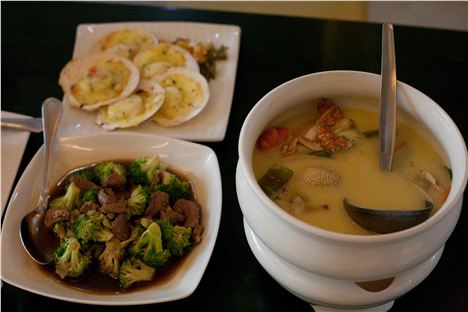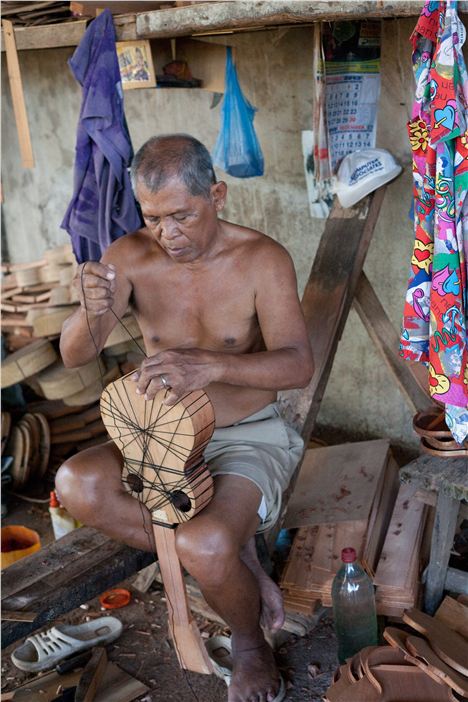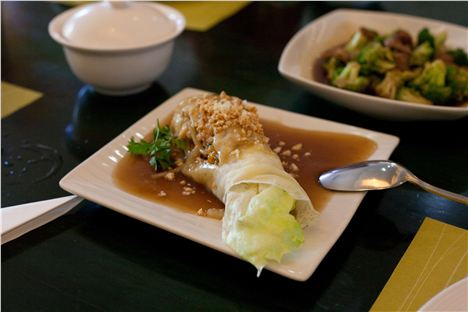I STEP from the car and a waiting concierge presents me with a black umbrella. It isn’t raining – it’s just sheltering me from the blistering sun that fries the pavements of Cebu, the capital of Cebu Island.
'The Spaniards conquered and ruled for over 300 years, leaving colonial architecture, fusion cuisine and a strong Catholic faith behind that still so strongly pervades Filipino culture'
The Philippines’ third-largest city is the gateway to the surrounding islands of the Visayas region and ferries and flights leave hourly. Luscious, tropical, destinations await those who explore the Visayas, from Bohol and its Chocolate Hills, that pretty the landscape like giant tiers of birthday cake, to the rugged, remote beauty of Romblon.
Many visitors gloss over the city, yet it’s worth a detour. There’s a chic, creative side with a strong cultural heritage, though it doesn’t unveil itself immediately, but requires some seeking out. It’s a place to experience and explore Filipino culture and history from food, to art, to history and where indigenous traditions and colonial Spanish and American influences merge. It was the first Spanish settlement and is the oldest city in the country. So I stayed a few days and took a city tour
I’m at the shrine of Lapu-Lapu in Punta Engaño Park on Mactan Island, where luxury resorts like the Shangra-la reside. It’s also the base for the airport and is connected to the city via the impressive Marcelo Fernan cable bridge
A 20ft bronze statue remembers Lapu-Lapu, the great tribal leader and national hero of the Filipino people. Depicted as a muscular, virile giant, he fought and killed the first Spanish invader, Ferdinand Magellan in 1521. Though Lapu-Lapu couldn’t defeat the returning Spaniards, who conquered and ruled for over 300 years, leaving colonial architecture, fusion cuisine and a strong Catholic faith behind that still so strongly pervade Filipino culture.
While in Mactan, I discover the process of guitar and ukulele making - Filipino style – at Susing’s Factory where traditional instruments are made from mahogany and jackfruit and constructed by local luthiers. This family run business exports its strings to Manila and abroad and you can buy directly from the factory shop, too.
A microcosm of the Philippine capital, Manila, this noisy, sprawling metropolis has endless traffic jams and Americanised fast food joints and shining, new malls. The ‘jeepney’ is the main mode of pubic transport and is fun, but slow. Old American army trucks are pimped up and painted with pious slogans and garish designs. They’re the public bus equivalent and for around 20 pence, take passengers across town. Though before any traveling, I want to eat.
Filipino cuisine has a poor reputation, with limited spice and flavour, compared to neighbouring Vietnam, Thailand and China – known for their world-class cuisine. You can’t just pull up a chair at any neighbourhood café and taste amazing dishes. Though delve deeper and Filipino food is as heart-warming as the people. But you have to hunt the good stuff out.
In Cebu, I put my culinary sleuthing skills to the test and found dishes so delightful I questioned where all the Filipino restaurants were in London. If you step into any of the Café Laguna restaurants, run by the inspirational Lita Urbina, you’ll be in safe hands.
 Enticing dishes In Cafe Laguna, above abd below
Enticing dishes In Cafe Laguna, above abd below
“That is the dish that made me famous,” says Lita of her incredibly tasty ‘lumpia’. Oriental inspired and a favourite Filipino dish, the lumpia is similar to a spring roll. Lita’s is fresh and zingy served with a peanut and garlic sauce. I also tried her unique take on typical dishes like Butu Bumbong, a traditional rolled rice and coconut dessert, which Lita cooks with added finesse.
Urbina explains how she began a local café back in 1991. Guests couldn’t get enough of her cuisine and 12 years later she has seven restaurants across the Philippines. As CEO of the company, her six children now help to run her culinary empire. Eating at Café Laguna is like stepping into Lita’s living room, which is as tasteful and refined as an English country garden.
All fine china and starched white tablecloths, with a calming green décor. Lemongrass is Lita’s Thai and Vietnamese eatery and part of her chain. She studied both cuisines, learning to cook the signature dishes on par with her native recipes.
Lita is a wonderful, warm woman – the stuff great TV chefs are made of. Her regular customers are still eating here, I think, as she waves to a bevy of happy diners. Her accolades include Tatler Philippines Best Restaurant Award 2012 and 2013.
 Basilica Del Santo Nino. Picture: Monica Orellano
Basilica Del Santo Nino. Picture: Monica Orellano
With a full stomach, it’s onwards to explore the historic architecture that tells the story of the Philippines’ colonial past. Devastatingly, earthquakes have caused damage to the ancient buildings like the Basilica del Santo Niño, the oldest Catholic Church in the country. Located in the Plaza Indepedencia and founded in the 16th Century, the exterior is European in style and blends Muslim, Romanesque and neo-classical features.
The Yap Sandiego house is one of the oldest buildings in the Philippines and is still owned by the Sandiego family. Much of the exterior is intact, built in wood with a sloping thatched roof. Yet it is the inside where this cute visitors attraction comes to life. It’s crammed full of antiques and artefacts, religious effigies, oil paintings and furniture that have remained in this family residence for hundreds of years. It blends the Spanish and Chinese influences from the branches of the Yap Sandiego clan, and feels utterly Filipino in its merging of different cultures.
Fort San Pedro, a military defence structure built by the Spanish in 1565, has an internal courtyard garden and wandering the ancient, crumbling ramparts is fascinating. The structure, partly built in coral, has also suffered earthquake damage, with sections out of bounds. Over the years the building has been an army garrison, a prison camp and city zoo and now a place to remember the past and escape the urban chaos for a while.
I end my visit high above the city in the Beverly Hills district, at the Taoist Temple. A place of worship for the local Chinese community, it is a colourful, multi-tiered structure and the entrance is a replica of the Great Wall of China. Visitors are free to wander and the atmosphere is contemplative. The view is green and undulating, a place to breathe freely away from the city smog.
To combine the urban experience with rest and relaxation, Mactan Island and the Costabella resort are the perfect choice. The Costabella is a luxury hideaway with a local, family-run feel. Rooms and suites have sea views, finished with sliding mahogany doors leading on to beachside balconies. And beds are big enough to sleep four. The food is delicious, the hospitality even more so and the private beach is the place for chilling out before exploring.
Fact file
Getting there
Philippine Airlines flight from Heathrow to Cebu. 16 hours, changing at Manila.
City tours can be arranged through the Cebu tourist board: http://www.cebucitytours
















